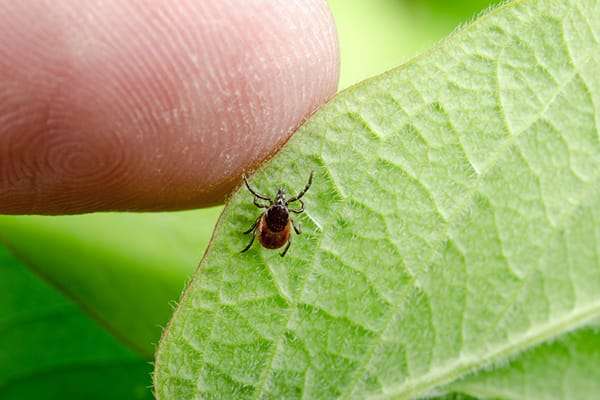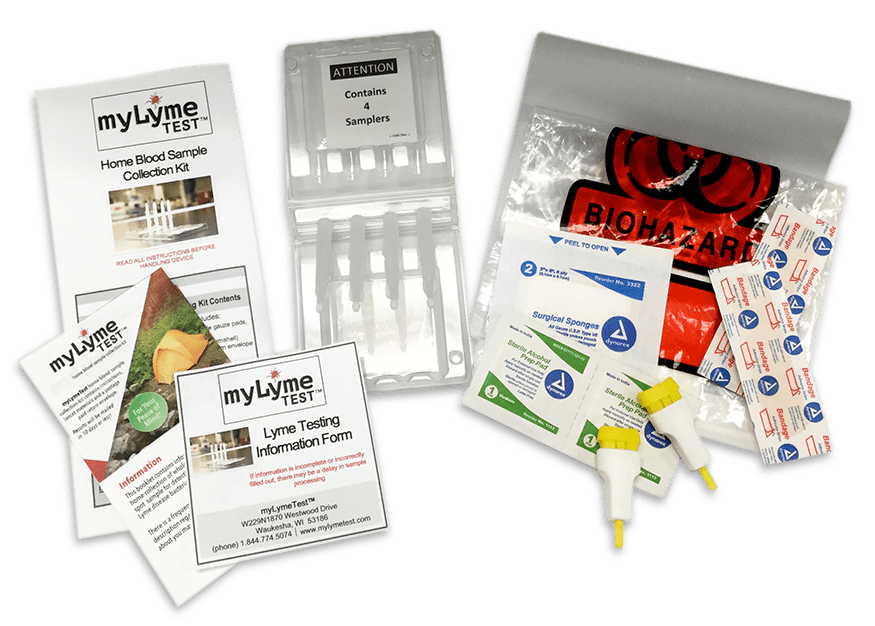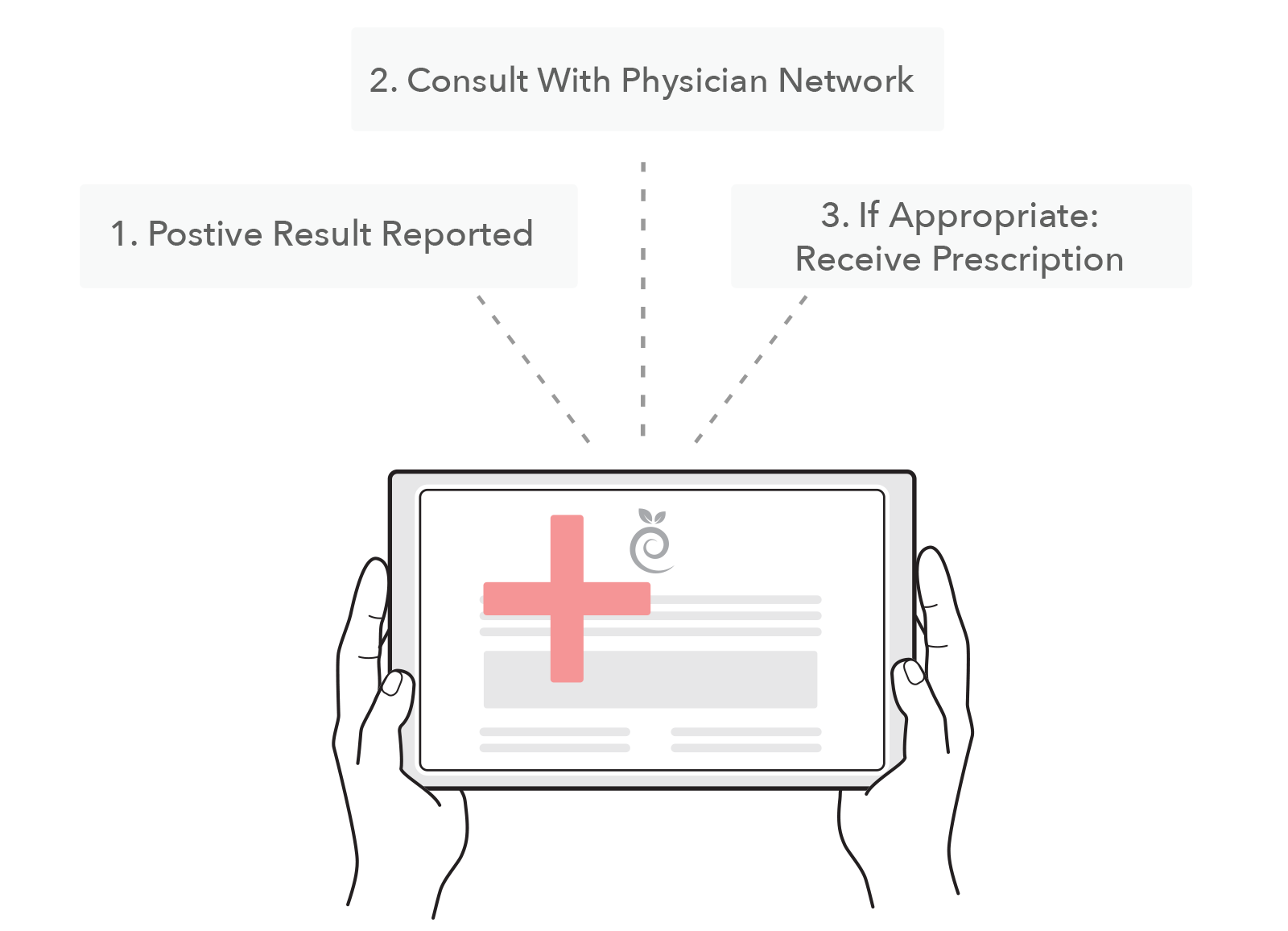References Choosing A Test
Notes On Serological Tests
For patients with illness lasting over a month, only IgG testing should be performed . A positive IgM test alone is not sufficient to diagnose current disease in these patients.
Due to antibody persistence, a positive serological test cannot distinguish between active and past infection.
Serological tests:
- should not be done as a test of cure
- cannot be used to measure treatment response
The EIA test:
- may yield false-positive results when used as a stand-alone test
- may cross-react with antibodies to commensal or pathogenic spirochetes
- there may be some viral infections for certain autoimmune diseases
Are There Any Risks To Lyme Disease Tests
There is very little risk to having a blood test or a lumbar puncture. If you had a blood test, you may have slight pain or bruising at the spot where the needle was put in, but most symptoms go away quickly. If you had a lumbar puncture, you may have pain or tenderness in your back where the needle was inserted. You may also get a headache after the procedure.
Also Check: Dr Frank Noonan Lyme Disease
Traditional Lyme Disease Tests Are Not Specific Enough
Lyme disease is caused by the spiral-shaped bacteria Borrelia. There are multiple species and strains of Lyme borreliae . Therefore, tests must be targeted to these multiple species and strains in order to be able to detect them. If a patient is infected with a species or strain of Lyme borreliae that their test cant detect, they will get a false-negative test result and thus risk missing their diagnosis. This can be costly and dangerous.
Many ELISA and Western blot Lyme disease tests are only equipped to detect one strain of one species of Borrelia: Borrelia burgdorferi B31 . This means that those tests are missing infections caused by other strains and/or species of Lyme borreliae.
In one internal study designed to test the validity of the IGeneX ImmunoBlot against traditional Western blot tests, a total of 132 patients were tested by both Lyme Western blots and Lyme IB. 43 patients were seropositive on the ImmunoBlot, and 14 were positive on standard Western blots prepared from a mixture of two species for Bb ss B31 and 297. Thus 29 of the 43 patients tested negative on Western blots i.e., the Western blot totally missed their infections with strains other than Bb ss B31 and 297.
With such limited tests, patients infected with non-B31 species and strains e.g., B. mayonii, B. californiensis, or European species are at risk of receiving false negatives and missing the chance to treat their diseases.
Getting Tested For Lyme Disease

Lyme disease testing is usually ordered by a doctor and is used when there are signs or symptoms consistent with Lyme disease.
A blood sample can be drawn in a doctors office or other medical setting. If a test of cerebrospinal fluid is needed, an outpatient procedure called a lumbar puncture can be done in a hospital. Samples are then analyzed in a credentialed laboratory.
Recommended Reading: Lyme Literate Doctors Los Angeles
What To Think About
- It may be hard to tell if you have Lyme disease. False-positive and false-negative Lyme disease test results are common. Many people do not make antibodies to Lyme disease bacteria for up to 8 weeks after being infected.
- Doctors often do not rely on test results alone when recommending treatment for a person who may have Lyme disease. Treatment is often based on a person’s symptoms, the time of year, having a tick bite, and other risk factors for Lyme disease.
Confirming Lyme Disease In The Age Of Covid
The current COVID-19 pandemic is posing a new challenge in the diagnosis of Lyme disease. The two conditions have a lot of overlapping symptoms, such as fever, malaise, generalized pain and lack of energy. During these times, its advisable to rule out COVID-19 first before embarking on any other test.
Asking focused questions about personal lifestyle may help guiding the diagnosis of Lyme disease. Some key questions include:
- Any outdoor activities in areas already identified as having high prevalence of ticks?
- Any recollection of tick bites or removal of ticks from the body?
- Any skin rashes? ,
- Do you live in an endemic region for Lyme disease? If youre not sure, you can check public health websites. Knowing if one lives in an endemic region for Lyme disease is essential, as these recommendations should be encouraged in all emergency departments and family doctors offices in areas of high prevalence.
Don’t Miss: Lyme Disease Treated With Antibiotics
How Can The Lyme Multiplex Assay Be Compared To Other Serological Lyme Assays
Researchers at the Animal Health Diagnostic Center at Cornell University have compared the former ELISA/Western blot procedure and commercial C6- based assays with the Lyme Multiplex Assay12-14. Multiplex Assay OspF and C6 results highly correlate in infected or non-infected dogs12. In horses, comparisons of C6 results and Lyme Multiplex Assay OspF values showed that antibodies to OspF are more robust and the preferred infection markers in horses14. The Equine Lyme Multiplex Assay provides comprehensive information on the horses stage of infection and, in vaccinated horses, on the antibody status induced by vaccination.
What Health Professionals Need To Know About Lyme Disease
Lyme disease is a serious illness caused by the bacterium Borrelia burgdorferi. The bacterium is a spirochete transmitted by certain species of Ixodes ticks. It is spread through the bite of infected blacklegged ticks and western blacklegged ticks.
Health professionals are encouraged to further their knowledge of Lyme disease in Canada. This includes the ability to:
- understand and identify the signs and symptoms
- prescribe appropriate treatment for patients diagnosed with the disease
- report human cases through appropriate channels
Symptoms sometimes appear in overlapping stages, as:
- early localized Lyme disease
- early disseminated Lyme disease
- late disseminated Lyme disease
It is important to note that some people with Lyme disease may have no or minimal symptoms. Others may suffer more severe symptoms.
Some people may not develop symptoms until weeks after the initial bite, as described in the early localized disease stage below. In this case, they may not remember the tick bite or associate the illness with the bite. Because the blacklegged tick is so small and usually painless, some people may not even know they were bitten by a tick.
Health professionals should be knowledgeable about the clinical manifestations and epidemiological risk factors of Lyme disease. Consider Lyme disease as part of your differential diagnosis in a patient who presents with compatible symptoms and signs.
You May Like: Dr Emilia Eiras Lyme Disease
The Elisa And Western Blot Are Not Sensitive Enough
Another major limiting factor of the traditional ELISA and Western blot is the quality. These tests tend to use lysed BB cultures, and therefore, depending on the culture conditions, some antigens are over-expressed, and some are under-expressed. This, in turn, can affect the ability to detect antibodies from patients blood.
Whats more, if a patient tests too early after a tick bite, his or her body may not have produced enough antibodies to show up on a test with suboptimal sensitivity.
Direct Methods For Detection Of B Burgdorferi
Laboratory tests for direct detection of B. burgdorferi are hampered by very low numbers of spirochetes in the majority of clinical samples. The lack of sensitive, relatively easy, fast, direct tests for the presence of B. burgdorferi is one of the main challenges in the laboratory diagnosis of Lyme disease. While direct tests for B. burgdorferi can sometimes be helpful, none are required for the diagnosis of the disease. The main direct test modalities used are culture and PCR. Histopathology has limited utility, being used mostly to exclude other diseases, and in the evaluation of suspected cases of borrelial lymphocytoma and acrodermatitis chronica atrophicans,. Detection of B. burgdorferi is difficult and time-consuming due to the extreme scarcity of organismsâ. Warthin-Starry and modified Dieterle silver stains, focus-floating microscopy, as well as direct and indirect immunofluorescence assays with anti-borrelial antibodies have been used, but can be difficult to interpret and require special expertise and careful use of controlsâ. At present, no antigen assays are recommended for the diagnosis of Lyme disease. A research test for detection of OspA has been used in cerebrospinal fluid. An assay to detect antigens in urine has been shown to be unreliable.
You May Like: How To Test For Late Stage Lyme Disease
The Best Test For Lyme Disease
Lyme disease is a tick-borne illness spread by Lyme borreliaebacteria which includes, but is not limited to, Borrelia burgdorferi sensu stricto. The Centers for Disease Control and Prevention estimate that there are 400,000 cases of Lyme disease annually, making Lyme a serious public health concern that only stands to grow as the spread of ticks affects disease endemicity and seasonality.
One of the biggest challenges of fighting Lyme disease is providing patients with accurate diagnostic tests. Without access to the best tests for Lyme disease, its impossible to diagnose this treatable disease in a timely manner. When the disease isnt caught in time, it can spread throughout the body and cause chronic health problems that could otherwise be avoided with earlier detection and treatment.
The Chance Of Getting Lyme Disease

Not all ticks in England carry the bacteria that causes Lyme disease.
But it’s still important to be aware of ticks and to safely remove them as soon as possible, just in case.
Ticks that may cause Lyme disease are found all over the UK, but high-risk places include grassy and wooded areas in southern and northern England and the Scottish Highlands.
Ticks are tiny spider-like creatures that live in woods, areas with long grass, and sometimes in urban parks and gardens. They’re found all over the UK.
Ticks do not jump or fly. They attach to the skin of animals or humans that brush past them.
Once a tick bites into the skin, it feeds on blood for a few days before dropping off.
Also Check: Can I Test Myself For Lyme Disease
How Do They Test For Lyme Disease
Lyme disease is best tested using two different blood testing methods. These are:
- The Enzyme-linked Immunosorbent Assay test: In a nutshell, this test will look for signs that your body is trying to fight off Lyme disease by producing antibodies. However, the ELISA test may come back negative even when a person is infected by the Borrelia burgdorferi bacteria. False-negatives can occur during the early stages of the disease, where the infected persons body has not produced enough antibodies to fight off the B. burgdorferi bacteria. For this reason, reliable diagnosis is not usually based only on the ELISA test results.
- Western Blot test: Heres a simple way to explain the western blot test without getting into all the nitty-gritty details of what it does and how it does it. Put simply, it separates the blood proteins and detects antibodies to the bacteria causing the Lyme disease. Usually, when an ELISA test comes back positive, a western blot test is performed to confirm the diagnosis.
Ideally, the CDC recommends standard two-tier testing to confirm the veracity of the Lyme disease test accuracy. Together, the ELISA and western blot tests are 99.9% accurate.
Question 4 What Tests To Assist In The Diagnosis Of Lyme Disease Are Available At Quest
Serologic testing is the principal means of laboratory diagnosis of Lyme disease. Quest offers testing in accordance with the Centers for Disease Control and Prevention guidelines for early/acute Lyme testing.3 When laboratory diagnosis is indicated, current recommendations include using a 2-tier testing approach that begins with a sensitive enzyme immunoassay , followed by a confirmatory immunoassay for specimens yielding positive or equivocal results.3 In the standard 2-tier test algorithm, a Western blot or immunoblot assay is used for confirmation. However, on July 29, 2019, the US Food and Drug Administration cleared several Lyme disease serologic assays with new indications for use, which allowed an EIA to be used as the confirmatory test in a modified 2-tier testing algorithm.3 The MTTT algorithm is now considered an acceptable approach for the serologic diagnosis of Lyme disease and may be able to assist in the identification of early Lyme disease within the first 30 days of infection.3
Quest offers test options that use both the STTT and the MTTT algorithm:
- STTT: Lyme Disease Ab with Reflex to Blot
- MTTT: Lyme Disease Antibody with Reflex to Immunoassay
Click here for a complete list of additional tests for tick-borne infectious diseases available from Quest.
Read Also: Urgent Care East Lyme Ct
Question 7 What Are Some Prominent Limitations Of Serologic Testing For Lyme Disease
As noted above, serologic tests may yield negative results early during infection, before antibodies have reached detectable levels. In addition, serologic assays may give false-positive results in individuals with other conditions, including 3,5,6
- Pathogenic spirochetal diseases, such as syphilis, yaws, pinta leptospirosis, relapsing fever, and periodontal disease
- Other bacterial and viral infections, such as Rocky Mountain spotted fever, Epstein-Barr virus, and cytomegalovirus
- Connective tissue autoimmune diseases associated with positivity for anti-nuclear antibody, including rheumatoid arthritis and systemic lupus erythematosus
When Should I Get Checked For Lyme Disease
Generally, it is best to get tested for Lyme disease if you live where ticks are common or have recently visited such areas. Most certainly, you should get tested if you suspect that a tick has bitten you. It is important to talk to your doctor if you think you have any of the following early Lyme disease symptoms:
- A rash resembling a bulls eye on the spot where youve been bitten
- Fatigue
- Headaches
- Fever
Other symptoms dont show up immediately. Sometimes, it takes up to a few weeks or months after the tick bite to notice the following:
- Swelling on the joints or severe joint pain
- Tingling in the feet and hands
- Dizziness
- Shortness of breath
While it is okay get checked early, Lyme disease test results numbers are more authentic a few weeks after youve been bitten by a carrier-tick. Your body would have developed antibodies within that period, and that can make it easier to detect the disease.
You May Like: How Does Lyme Disease Affect You
Submission And Collection Notes
If European Lyme disease testing is required: enter ‘European Lyme disease’ under Test Description of the and provide travel history including location of travel and dates.
European Lyme is referred to the National Microbiology Laboratory in Winnipeg.
Indicate the following on the :
- date of onset
- exposure
Treating Lyme Disease While Pregnant
Treatment for pregnant women with Lyme disease is similar to that of non-pregnant adults. However, certain antibiotics, such as doxycycline should not be used as it can affect your unborn child.
Research shows that there are no life-threatening effects on the child when a pregnant woman receives appropriate antibiotic treatment for Lyme disease.
Read Also: Symptoms Of Lyme Disease In My Dog
Access To Lyme Disease Testing Services
This guidance on the laboratory diagnosis of Lyme disease is intended for healthcare professionals in the UK. Patients concerned about possible Lyme infection should consult an appropriate healthcare professional, for example their GP, in the first instance.
Health professionals wishing to discuss a possible case or ascertain local arrangements for testing should contact a local Infection specialist .
NHS testing for Lyme disease is available through local service providers and the Rare and Imported Pathogens Laboratory at PHE Porton where ISO15189 accredited confirmatory testing is also provided. RIPL is also introducing a testing service for neurological Lyme disease.
RIPL provides medical and laboratory specialist services to the NHS and other healthcare providers, covering advice and diagnosis of a wide range of unusual bacterial and viral infections, including Lyme disease.
RIPL continuously updates its methods and will make further information on Lyme disease diagnostic testing available as it arises.
The Most Common Lyme Disease Blood Tests

The two most common diagnostic tests for Lyme disease are the enzyme-linked immunosorbent assay and the Western blot. These Lyme disease tests allow physicians to visualize the reaction between antibodies in an infected persons blood to specific antigens or parts of the bacteria that cause Lyme disease.
In the case of the Western blot, for example, antigens are separated by size and then transferred onto a membrane strip. When an antibody reacts with an antigen on the strip, that band will turn dark purple. For test results to be positive, a specific combination of bands on the membrane strip must be present.
Recommended Reading: Pcr Blood Test For Lyme Disease
What Is The Most Accurate Test For Lyme Disease
Lyme disease is more common than many people think. Figures from the Center for Disease Control suggest that roughly 300,000 Lyme disease cases occur every year in the US.
The numbers are alarming, but it gets worse as finding accurate diagnostic tests can be challenging. Although the disease is treatable, it is nearly impossible to tackle it effectively if it is not diagnosed accurately and early enough.
Late detection can lead to severe health problems such as arthritis, heart blockage, and inability to concentrate, among other problems.
Given the prevalence and seeming elusiveness of the disease, some of the logical questions concerned persons would ask are: what is the most accurate test for Lyme disease? And when should I get checked for Lyme disease? This article will proffer answers to these and many other related questions. But first, a little background would be in order.